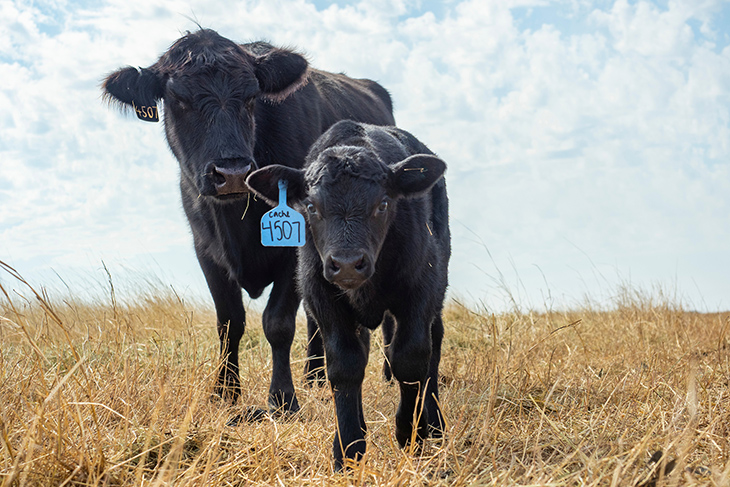
Understanding parturition a risk management tool for cow-calf operations
Monday, February 1, 2021
A review of the stages of parturition can help lessen anxieties of cow-calf operators and protect producer investment in their animals during the upcoming calving season, said Oklahoma State University Extension experts.
There are three stages to parturition. It is not unusual for stage one – the dilation of the cervix – to occur completely unnoticed, but stage two – delivery of the newborn – and stage three – shedding of the fetal membranes – may require assistance from the cattle producer.
“We’re mostly concerned about stages two and three, but producers need to check that cervical dilation is complete before any pulling of the calf is attempted,” said Dr. Rosslyn Biggs, OSU Extension veterinarian and director of continuing education for the university’s College of Veterinary Medicine. “Also, be aware that pregnant cows or heifers in a pasture may isolate from the herd during stage one.”
Cervical dilation begins two to 24 hours before completion of parturition, most often taking place within two to six hours. Common behavioral changes may include elevation or switching of the tail and increased mucous discharge. Pelvic ligaments near the animal’s pinbones may become visually evident, providing a sunken appearance on each side of the tailhead.
Clinically, stage two begins with the appearance of membranes at the vulva, which historically in textbooks and popular press articles has been listed as lasting from two to five hours. However, a 1985 Oklahoma State study and 1984 research conducted at Miles City, Montana indicated that stage two is much shorter.
“In these studies, assistance was given if stage two progressed more than two hours after the appearance of the water bag at the vulva,” said Glenn Selk, OSU Extension emeritus animal scientist and managing editor of the university’s popular Cow-Calf Corner newsletter and SUNUP television segment. “Heifers calving unassisted did so in about one hour after the initiation of stage two, and mature cows calved within an average of 22 minutes of the initiation of stage two. Those that took longer needed assistance.”
Thus, data suggests that normal stage two of parturition should be redefined as approximately 60 minutes for heifers and 30 minutes for adult cows. In heifers, not only is the pelvic opening smaller, but the soft tissue has never been expanded prior to that first birth. Older cows have had deliveries before and birth often proceeds quite rapidly unless there is some abnormality such as a very large calf, backwards calf or twin birth.
Selk and Biggs recommended that if the cow or heifer is making good progress with each strain, allow the soon-to-be mama to continue on her own. Seek professional veterinary help as soon as possible if a problem occurs that cannot be solved easily in minutes.
After delivery of the calf, fetal membranes are considered retained if they have not been shed after 12 hours. Years ago, it was widely considered necessary to remove the membranes by manually unbuttoning the attachments. Research has since shown that manual removal can be detrimental to uterine health and future conception rates. In such cases, administration of antibiotics typically will guard against infection and the placenta will slough out in four to seven days.
“It’s best not to wait until a problem birth occurs before contacting the veterinarian for the first time,” Biggs said. “A consultancy fee is a small price to pay to have the veterinarian come out beforehand and become familiar with the operation and livestock. Think of it as an investment in risk management that promotes the best possible likelihood of getting healthy calves on the ground.”
Fact sheets detailing research-based information about best calving management practices are available online and through OSU Extension county offices.
MEDIA CONTACT: Donald Stotts | Agricultural Communications Services | 405-744-4079 | donald.stotts@okstate.edu
